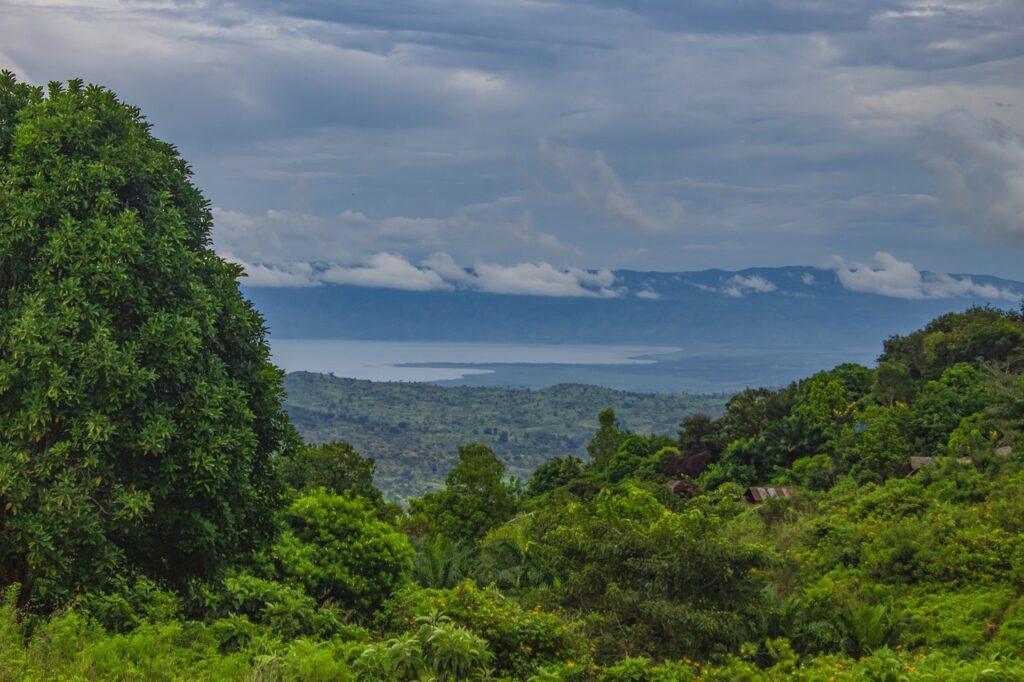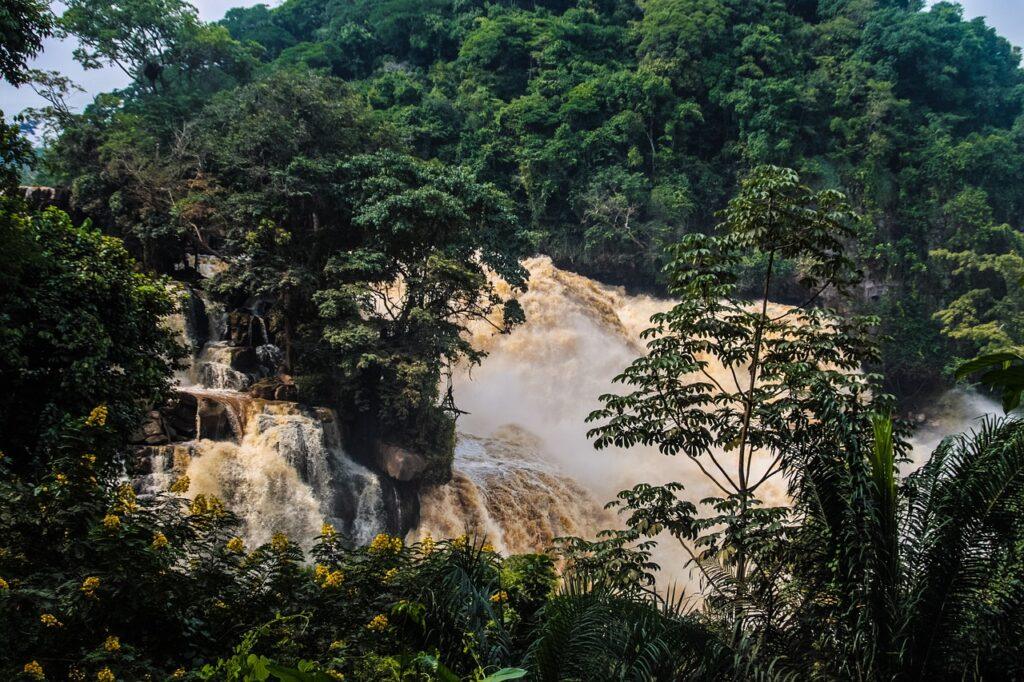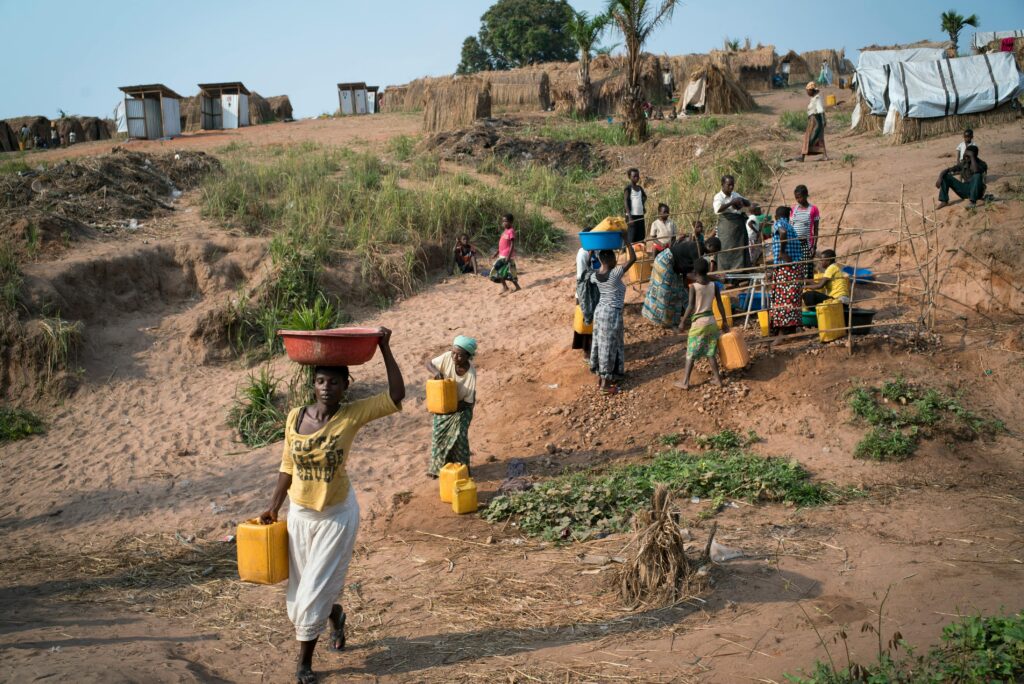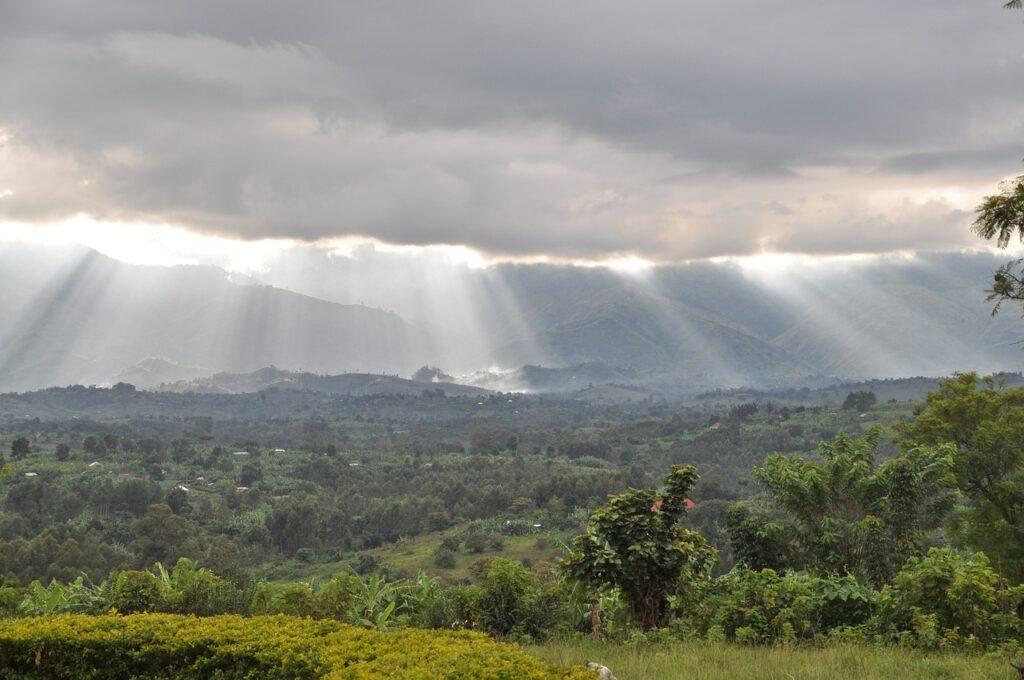Standing at the edge of the Congo River-the murky waters stretching out before me like an endless abyss-a thrill of excitement mixed with a dash of trepidation is stirred. The Democratic Republic of the Congo is not exactly your usual backpacking destination; if anything, it’s actually considered one of the toughest and most unconventional places to travel. The Democratic Republic of Congo is a country that can test even the most seasoned adventurers with its turbulent history, rough landscapes, and infrastructural shortage.
But I’m not just any adventurer; I’m a backpacker on a very tight budget, and I was after the cheapest, most off-the-beaten-path experiences. The DRC sounded like the ultimate challenge with its ultralow cost of living and veritable glut of unconventionally weird attractions. From hitchhiking through the jungle to sleeping in rural villages, I did it all, seeing every nook and cranny of this enormous mysterious country on a broke budget.
In this blog, I’ll share my stories and insights from backpacking through the DRC, from the stunning natural beauty of Virunga National Park to vibrant street life in Kinshasa, as I take you with me on a journey through one of Africa’s most fascinating and least-visited countries. If you are ready for a truly different travel adventure, let me take you on this journey to the heart of the Democratic Republic of the Congo.
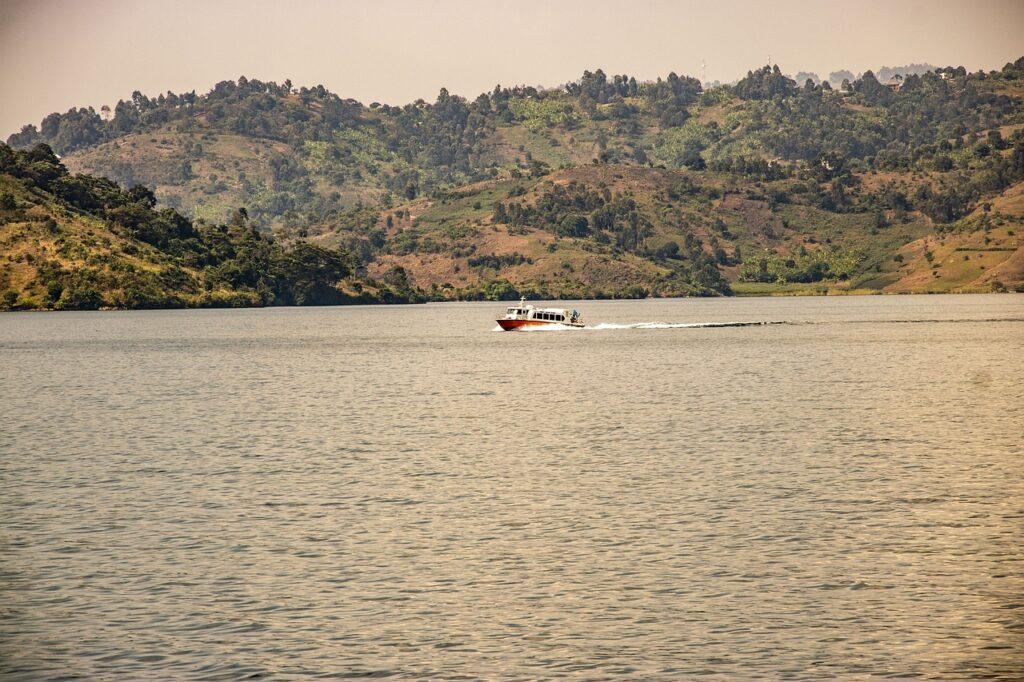
How to get there:
The Democratic Republic of the Congo is not the easiest country to get to, but with some planning and flexibility, it’s possible to reach the DRC using public transportation from neighboring countries. In this post, we’ll explore the cheapest ways to get to the DRC from nearby countries, including tips on finding affordable flights.
Flying into the DRC
The fastest way to reach the DRC is by flying into one of the country’s major airports, such as N’djili International Airport (FIH) in Kinshasa or Lubumbashi International Airport (FBM) in Lubumbashi. However, flights to the DRC can be expensive, especially if you’re traveling from outside of Africa.
To find the cheapest flights to the DRC, consider flying into one of the following nearby countries and then taking public transportation to the DRC:
- Angola: Flights to Luanda (LAD) can be found for relatively cheap from destinations like Lisbon (LIS) or São Paulo (GRU).
- Tanzania: Dar es Salaam (DAR) is a major hub for flights in East Africa, and you can often find affordable flights from destinations like Dubai (DXB) or Mumbai (BOM).
- Zambia: Lusaka (LUN) is another major hub in Southern Africa, and flights from destinations like Johannesburg (JNB) or Nairobi (NBO) can be found for relatively cheap.
From these countries, you can take public transportation to the DRC. Here are some options:
From Angola
- Bus: Take a bus from Luanda to the border town of Luau, and then transfer to another bus to reach the DRC border. From there, you can take a taxi or moto to the nearest town. Companies like Interprovincial and Sobaixo operate bus services from Luanda to Luau.
- Taxi/Moto: You can also hire a taxi or moto to take you directly from Luanda to the DRC border. This option is more expensive, but can be faster and more convenient.
From Tanzania
- Bus: Take a bus from Dar es Salaam to the border town of Kasulu, and then transfer to another bus to reach the DRC border. From there, you can take a taxi or moto to the nearest town. Companies like Sumry and Shabiby operate bus services from Dar es Salaam to Kasulu.
- Ferry: Another option is to take a ferry from Dar es Salaam to the port city of Kalemie in the DRC. This journey takes around 48 hours and can be a scenic way to see the lake. However, the ferry service is not always reliable, and you should be prepared for delays.
From Zambia
- Bus: Take a bus from Lusaka to the border town of Chirundu, and then transfer to another bus to reach the DRC border. From there, you can take a taxi or moto to the nearest town. Companies like Intercape and Mazhandu operate bus services from Lusaka to Chirundu.
- Taxi/Moto: You can also hire a taxi or moto to take you directly from Lusaka to the DRC border. This option is more expensive, but can be faster and more convenient.
When to go:
The Democratic Republic of the Congo is a vast and diverse country, with a range of climates and regions to explore. As a broke backpacker, it’s essential to plan your trip carefully to make the most of your time and budget. In this post, we’ll break down the best times to visit the DRC, including the dry and wet seasons, holidays, and festivals.
Dry Season (May to September)
The dry season is the best time to visit the DRC, with clear skies, low humidity, and comfortable temperatures. This is the peak tourist season, but don’t worry – as a broke backpacker, you can still find affordable accommodations and transportation.
- Pros: Easy travel, comfortable weather, and access to remote areas.
- Cons: Higher prices for accommodations and tourist services.
Wet Season (October to April)
The wet season can be challenging for travelers, with heavy rainfall, muddy roads, and increased risk of disease. However, this is also the low season, which means lower prices for accommodations and tourist services.
- Pros: Lower prices, lush landscapes, and fewer tourists.
- Cons: Difficult travel, increased risk of disease, and limited access to remote areas.
Holidays and Festivals
The DRC has a range of holidays and festivals throughout the year, which can be a great way to experience the local culture. Some of the most notable events include:
- Independence Day (June 30th): Celebrates the DRC’s independence from Belgium in 1960.
- National Heroes’ Day (January 17th): Honors the country’s national heroes, including Patrice Lumumba.
- Fête du 24 Novembre: Celebrates the country’s independence and national unity.
- Pros: Unique cultural experiences, live music, and traditional food.
- Cons: Large crowds, higher prices, and limited accommodations.
Regional Variations
The DRC is a vast country, and the climate and weather patterns can vary significantly depending on the region. Here are some regional variations to keep in mind:
- Kinshasa: The capital city has a tropical savanna climate, with high temperatures and humidity throughout the year.
- Lubumbashi: The southern city has a subtropical climate, with mild winters and hot summers.
- Goma: The eastern city has a tropical climate, with high temperatures and rainfall throughout the year.
- Virunga National Park: The park has a tropical climate, with high temperatures and rainfall throughout the year.
Best Itineraries:
3-Day Itinerary
- Day 1: Arrive in Kinshasa, explore the city’s vibrant markets and nightlife.
- Day 2: Visit the Congo River, Palais du Peuple, and the National Museum.
- Day 3: Take a day trip to the nearby city of Kisantu, known for its beautiful waterfalls and colonial architecture.
1-Week Itinerary
- Days 1-2: Explore Kinshasa’s markets, museums, and nightlife.
- Days 3-4: Take a bus or taxi to the city of Mbuji-Mayi, known for its diamond mines and traditional crafts.
- Days 5-6: Visit the nearby Upemba National Park, home to a diverse range of wildlife.
- Day 7: Return to Kinshasa for departure.
2-Week Itinerary
- Days 1-3: Explore Kinshasa’s markets, museums, and nightlife.
- Days 4-6: Take a bus or taxi to the city of Lubumbashi, known for its copper mines and vibrant cultural scene.
- Days 7-9: Visit the nearby Lake Tanganyika, the second-deepest lake in the world.
- Days 10-12: Explore the city of Goma, located on the shores of Lake Kivu.
- Days 13-14: Visit the nearby Virunga National Park, home to a diverse range of wildlife, including mountain gorillas.
1-Month Itinerary
- Weeks 1-2: Explore the cities of Kinshasa, Mbuji-Mayi, and Lubumbashi.
- Weeks 3-4: Visit the national parks of Upemba, Virunga, and Garamba.
- Take a bus or taxi to the city of Kisangani, known for its beautiful waterfalls and colonial architecture.
3-Month Itinerary
- Months 1-2: Explore the cities of Kinshasa, Mbuji-Mayi, Lubumbashi, and Kisangani.
- Month 3: Visit the national parks of Upemba, Virunga, Garamba, and Maiko.
- Take a bus or taxi to the city of Bukavu, located on the shores of Lake Kivu.
- Explore the nearby Kahuzi-Biega National Park, home to a diverse range of wildlife, including lowland gorillas.
6-Month Itinerary
- Months 1-2: Explore the cities of Kinshasa, Mbuji-Mayi, Lubumbashi, and Kisangani.
- Months 3-4: Visit the national parks of Upemba, Virunga, Garamba, Maiko, and Kahuzi-Biega.
- Months 5-6: Take a bus or taxi to the northeastern part of the country and explore the cities of Bunia, Butembo, and Beni.
- Visit the nearby Okapi Wildlife Reserve, home to a diverse range of wildlife, including okapis, elephants, and chimpanzees.
- Explore the beautiful scenery of the Ruwenzori Mountains and the Semliki Valley.
- Take a boat ride on Lake Albert and visit the nearby Blue Mountains.
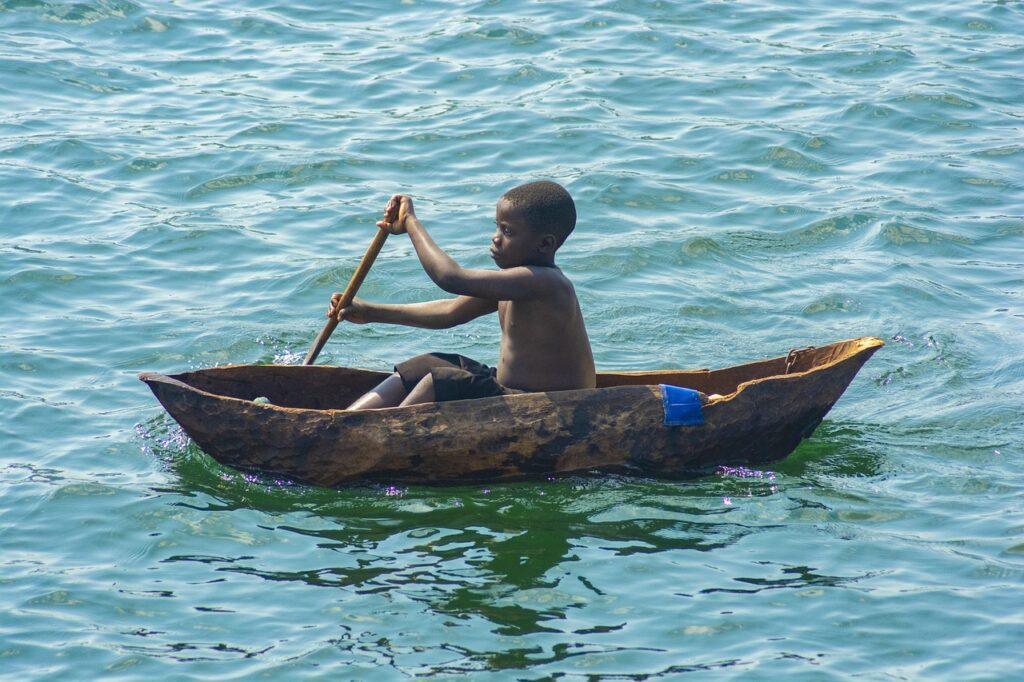
Transportation:
The Democratic Republic of the Congo (DRC) is a vast and diverse country, with limited transportation infrastructure. However, with some planning and flexibility, it’s possible to navigate the country using public transportation and hitchhiking. In this post, we’ll provide a comprehensive guide to public transportation in the DRC, as well as a detailed hitchhiking guide based on information from (link unavailable)
Public Transportation in the DRC
Public transportation in the DRC is limited, but there are several options available:
Buses
Buses are the most common form of public transportation in the DRC. They operate on a network of routes connecting major cities and towns. However, the buses are often overcrowded, and the roads can be rough.
Taxis
Taxis are widely available in urban areas, but they can be expensive. It’s best to negotiate the fare before you start your journey.
Motorcycles
Motorcycles, known as “motos,” are a popular form of transportation in the DRC. They’re often used for short trips, but can also be hired for longer journeys.
Boats
Boats are an important form of transportation in the DRC, particularly on the Congo River. They’re often used for cargo transport, but can also be used for passenger travel.
Hitchhiking in the DRC
Hitchhiking is a viable option for traveling in the DRC, particularly for broke backpackers. However, it’s essential to exercise caution and follow some basic safety guidelines.
General Tips
- Be prepared: Make sure you have a valid visa, a map, and a basic understanding of the local language.
- Dress modestly: Avoid wearing expensive jewelry or clothing that may attract unwanted attention.
- Be respectful: Treat local people with respect and dignity, and avoid taking pictures without permission.
- Stay safe: Avoid hitchhiking at night, and always trust your instincts. If a situation feels uncomfortable, it’s best to leave.
Hitchhiking Routes
Here are some popular hitchhiking routes in the DRC:
- Kinshasa to Lubumbashi: This route takes you through the southern part of the country, passing through the cities of Mbuji-Mayi and Kolwezi.
- Kinshasa to Kisangani: This route takes you through the central part of the country, passing through the cities of Mbandaka and Boende.
- Lubumbashi to Goma: This route takes you through the eastern part of the country, passing through the cities of Bukavu and Butembo.
Hitchhiking Tips
- Use a sign: Create a sign with your destination and hold it up to attract drivers.
- Be visible: Wear bright clothing and stand in a visible location to attract drivers.
- Be patient: Hitchhiking can take time, so be prepared to wait.
- Use your instincts: If a driver or situation feels uncomfortable, trust your instincts and leave.
Safety Considerations
Safety is a major concern when hitchhiking in the DRC. Here are some safety considerations to keep in mind:
- Avoid hitchhiking at night: It’s best to avoid hitchhiking at night, as the roads can be dangerous and there’s a higher risk of robbery or assault.
- Avoid traveling alone: Whenever possible, try to travel with a partner or group. This can help deter potential threats and provide an added layer of safety.
- Keep valuables secure: Always keep your valuables secure and out of sight. Avoid carrying large amounts of cash, and use a money belt or secure bag to carry your belongings.
- Stay informed: Stay informed about local conditions and potential safety threats. Register with your government’s travel advisory department to receive important safety updates.
Top things to do:
Kinshasa
- Congo River: Take a stroll along the riverbank and enjoy the views.
- Palais du Peuple: Explore the grand palace and gardens.
- National Museum: Learn about Congolese history and culture.
- Marché Central: Shop for local handicrafts and try street food.
- Academie des Beaux-Arts: Discover Congolese art and music.
- Kinshasa Botanical Garden: Relax in the beautiful gardens.
- Kinshasa Zoo: Visit the zoo and see local wildlife.
Lubumbashi
- Copper Mines: Take a guided tour of the copper mines.
- Lubumbashi Museum: Learn about the region’s history and geology.
- Lake Tshangalele: Relax by the lake and enjoy the scenery.
- Marché de la Liberté: Shop for local goods and try street food.
- Lubumbashi Cathedral: Visit the beautiful cathedral.
- Kipushi Cave: Explore the stunning cave formations.
Goma
- Virunga National Park: Hike and trek through the park’s stunning landscapes.
- Lake Kivu: Take a boat ride or relax on the beach.
- Goma Volcano: Hike to the top for stunning views.
- Goma Market: Shop for local handicrafts and try street food.
- Goma Port: Watch the boats come and go.
- Mont Goma: Hike to the top for panoramic views.
Kisangani
- Tshopo River: Take a boat ride or stroll along the riverbank.
- Kisangani Falls: Hike to the falls and enjoy the scenery.
- Kisangani Museum: Learn about the region’s history and culture.
- Marché de la Paix: Shop for local goods and try street food.
- Kisangani Botanical Garden: Relax in the beautiful gardens.
- Yoko Falls: Hike to the falls and enjoy the scenery.
Bukavu
- Lake Kivu: Take a boat ride or relax on the beach.
- Kahuzi-Biega National Park: Hike and trek through the park’s stunning landscapes.
- Bukavu Market: Shop for local handicrafts and try street food.
- Cyangugu Border: Explore the border town and its markets.
- Bukavu Port: Watch the boats come and go.
- Mount Kahuzi: Hike to the top for panoramic views.
North Kivu
- Rwenzori Mountains: Hike and trek through the mountains’ stunning landscapes.
- Lake Edward: Take a boat ride or relax on the beach.
- Virunga National Park: Hike and trek through the park’s stunning landscapes.
- Goma Volcano: Hike to the top for stunning views.
- Beni Market: Shop for local goods and try street food.
- Butembo Market: Shop for local handicrafts and try street food.
Tshopo Province
- Tshopo River: Take a boat ride or stroll along the riverbank.
- Kisangani Falls: Hike to the falls and enjoy the scenery.
- Tshopo National Park: Hike and trek through the park’s stunning landscapes.
- Yanonge Market: Shop for local goods and try street food.
- Isangi Port: Watch the boats come and go.
- Bafwasende Market: Shop for local handicrafts and try street food.
Maniema Province
- Lake Tanganyika: Take a boat ride or relax on the beach.
- Maniema National Park: Hike and trek through the park’s stunning landscapes.
- Kindu Market: Shop for local handicrafts and try street food.
- Lomami River: Take a boat ride or stroll along the riverbank.
- Kalemie Port: Watch the boats come and go.
- Kabambare Market: Shop for local goods and try street food.
Equateur Province
- Congo River: Take a boat ride or stroll along the riverbank.
- Mbandaka Market: Shop for local handicrafts and try street food.
- Equateur National Park: Hike and trek through the park’s stunning landscapes.
- Lukolela Market: Shop for local goods and try street food.
- Bolomba Falls: Hike to the falls and enjoy the scenery
Food:
Situated in the heart of Africa, the Democratic Republic of the Congo is a mix of cultures, traditions, and gastronomy. As such, the general food situation in the DRC reflects its rich cultural heritage: a high-pitched cacophony of traditional, colonial, and modern influences. The local food scene can be an adventure unto itself for a broke backpacker, with countless options to fit any budget and taste.
In the DRC, food forms an important part of the culture and usually is a way of securing close time with family and friends. Traditional Congolese dishes have been heavily influenced by its tropical climate; the major feature being fresh fruits, vegetables, and staple crops of cassava, plantains, and rice. Popular dishes include poulet à la moambé, a dish made with chicken in peanut sauce, matooke-steamed or boiled green bananas-and fufu-boiled and pounded cassava or yams.
Street food is also an important part of the DRC’s culinary panorama, from roasted meat and fish to fried plantains and sweet potatoes. Markets such as the Marché Central in Kinshasa and the Marché de la Liberté in Lubumbashi provide almost all sorts of fresh produce, meats, and prepared foods and are great places to sample local cuisine.
For broke backpackers, dining out is generally confined to eateries and street food stalls; dinner in a local restaurant will cost at least US$ 1-2, though for street food, the price could be even less. Concerning quality and safety, the thing is that everything strongly depends on the seller and place.
Besides traditional Congolese cuisine, the DRC also has a number of international restaurants, especially within the larger cities such as Kinshasa and Lubumbashi. Restaurants serving Chinese, Indian, and Lebanese cuisine are especially popular, offering quite a variety of options besides traditional Congolese dishes.
The many different food options available notwithstanding, the DRC faces severe problems with food security. In reality, most of its population, especially those living in rural areas with bad infrastructure and a general condition of poverty, cannot access enough nutritionally adequate food. Because of this, malnutrition remains very high, especially among children and pregnant women.
For broke backpackers, one of the best ways to contribute to the local economy and help address food security concerns is to support local food vendors and restaurants. By eating at locally owned eateries and buying food from local markets, travelers can help line the pockets of locals directly while supporting their livelihoods and promoting food security.
Food is not just a source of sustenance in the DRC, but also it is a source of hospitality and companionship. Sharing lunch or dinner with locals can be really helpful to form friendships and share culture. Food is used in many Congolese communities as a way of bringing everyone together to assure close bonding.
Among its favorites in the DRC includes poulet à la moambé, a rich and nutty stew made from chicken and peanuts with spices. These foods are normally served either with rice or fufu; fufu is indeed traditional in Congolese cuisines. The other relished dish includes matooke-a dish of steamed or boiled green bananas normally added with vegetables, meat, and beans. This is because they are common foods of the Congolese.
Besides these traditional dishes, the DRC is also famous for a number of exotic fruits and vegetables. The country boasts high-quality mangoes, papayas, and pineapples that are mostly sold in the local markets. This is a country that also has several types of unusual fruits like the horned melon and the tamarillo.
These are excellent means for broke backpackers to experience the culture and cuisine of the place they visit. Most of these fruits and vegetables can be found in local markets and often at very affordable prices.
Mealtimes in the DRC are usually a time of rest and socializing. In most Congolese societies, food is taken together with family and friends, accompanied by music, dance, and storytelling.
The best thing that broke backpackers can do, in order to learn about the community and make friends with locals, is to dive into the local food culture. Eat at local restaurants and street food stalls to get a feel for the local cuisine.
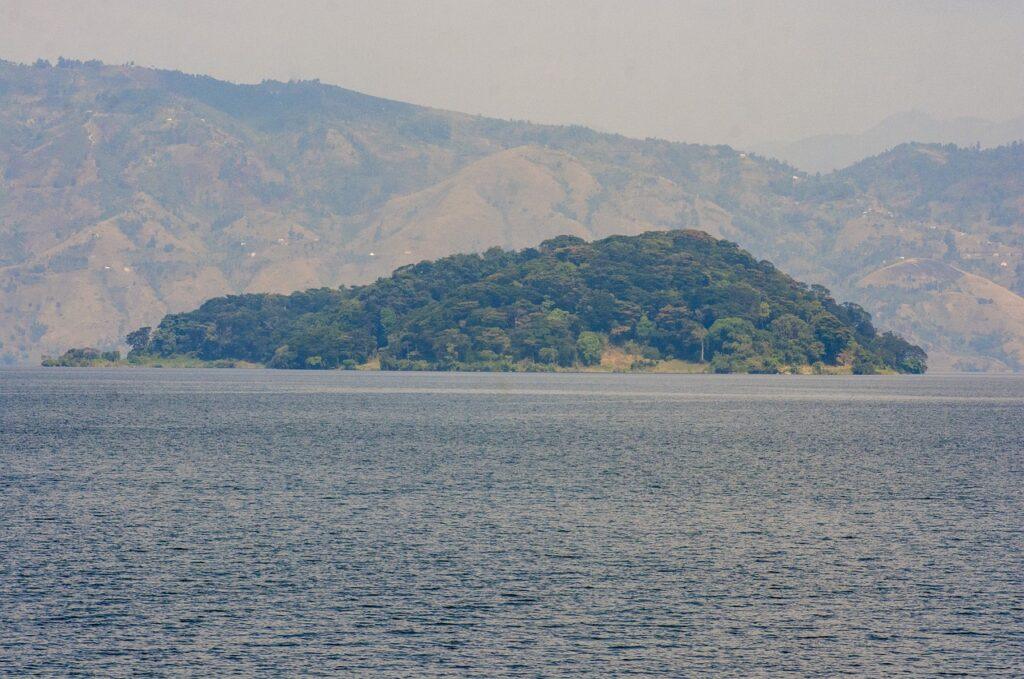
Culture:
The Democratic Republic of the Congo, located in central Africa, is a country with great cultural diversity. There are over 450 ethnic groups and over 700 languages spoken, making it one of the most culturally diverse countries on the planet. The history of the DRC is very complex and has been influenced by such factors as colonialism, slavery, and the coming of European missionaries, in a combination to shape up the cultural outlook of the country.
Congolese culture really has its roots in notions of community and family. In many Congolese societies, the basic unit of society is believed to be the family, with broader community defined by bonds of kinship. This interest in community and family becomes flagrantly evident from several traditional ceremonies and customs of the country. For instance, many Congolese cultures treat the birth of a child with some traditional ceremony that normally accompanies traditional music, dancing, and food.
Congolese people also have a lot of interest in music and dance. There are several styles of traditional music that include rumba, soukous, and ndombolo, among others. Most of these styles have a touch of traditional Congolese music in them, with the use of drums and other percussion instruments. Dance is also a very important part of Congolese culture, with many traditional dances performed during ceremonies and celebrations.
In addition to music and dance, Congolese culture is also manifested in the arts. The arts flourish here, with numerous local artists creating handicrafts that include woodcarvings, masks, and textiles. Such traditional crafts more often than not manifest the rich cultural heritage of this country; many of these reflect the same through traditional symbols and motifs.
The DRC also hosts a lot of festivals and celebrations commemorating specific events. One of the biggest festivals is the Festival of the Congo, which is annually held in the capital, Kinshasa. During this festival, the people of the Congo show respect for their cultural heritage by playing music, dancing, and displaying traditional crafts. Other important festivals include the Festival of the Virunga, which celebrates the country’s natural heritage, and the Festival of the Kasai, which celebrates the culture of the Kasai region.
While there are several challenges the DRC is facing, it still remains a country with deep and rich cultural heritage. Various ethnic groups, languages, and traditions contribute to the cultural landscape, which is multivariate and not simple. The visitors will find the DRC as a country offering them unique cultural experiences, ample opportunities to learn about its history, traditions, and customs.
The strong influence of colonialism and European missionaries can also be traced in the present cultural landscape. The large majority of Congolese people were obliged, at one point or another during the colonization era, to don European customs and traditions, with Christianity being no exception. This led to a unique blend of traditional and modern cultural practices, where the average Congolese blends both into daily life.
Over the recent past, Congolese culture has witnessed a rise in its promotion and preservation. Most of the local artists, musicians, and writers have been involved in the promotion of the country’s cultural heritage both at home and abroad. This movement has led to an increased interest in traditional Congolese music, dance, and art, as well as recognition of the country’s cultural importance.
The traditional attire in the country also shows the cultural heritage of the country. Most people wear traditional clothes, like the dashiki and kaftan, that are usually combined with intricate patterns and designs. These types of traditional dress are not only reflections of the country’s cultural heritage but also a symbol of national pride.
Besides traditional dress, the DRC is also known for its vibrant traditional markets. The market varies from traditional crafts to textiles and food. A person going to the market would feel the sights, sounds, and smells of traditional Congolese culture, and buy souvenirs that are unique to take back home.
The traditional cuisine also reflects the cultural heritage of the DRC. There are a lot of traditional dishes that come from the country, including poulet à la moambé, matooke, and fufu. These dishes often incorporate traditional ingredients, such as cassava, plantains, and peanuts, and are often served with a side of traditional vegetables, including leafy greens and sweet potatoes.
Its geographical location has also contributed to the traditional cuisines of the country. The DRC contains all types of climates and regions, each having its own culinary traditions. For example, seafood dishes are commonly prepared in the coastal areas of the country, while inland areas are famous for their meat and vegetable dishes.
Nowadays, there is a growing interest in traditional Congolese cuisine both abroad and locally. The majority of the local chefs and restaurants do their best in promoting the country’s culinary heritage and, thus, introducing visitors to the unique flavors and ingredients of traditional Congolese cuisine.
Accommodations:
Traveling through the Democratic Republic of the Congo can be a pretty daunting task for any broke backpacker. With very limited infrastructure and no tourist facilities whatsoever, finding affordable accommodations is often a chore. To the truly adventurous, though, the DRC offers an opportunity to experience the raw, unbridled energy of Africa.
Accommodation in the DRC can also be found cheaply, provided the visitor is flexible and open to experience a lot. In this place, luxury amenities or Western comfort is out of the book; in the DRC, it’s all about embracing unknowns and steeping themselves in the culture.
Some of the best ways to see real DRC are by being accommodated in local hostels and guesthouses. Most of them are family-run, giving you a view of traditional Congolese life. You will share your meals with the family and learn their customs and traditions for better understanding of the local culture.
But let me warn you, these hostels are not for the fainthearted. Amenities may be very basic, and one must put up with sometimes unsavory surroundings, though for the hardy, it pays off.
Picture yourself waking up with the sounds of drums and chanting outside your window, sliding into a bustling marketplace. Or envision yourself sitting down to eat with a family of 10, sharing laughter and jokes as though you have been long familiar with them. These are the experiences awaiting you in DRC’s cheap hostels and guesthouses.
Of course, there are associated risks in staying in such establishments: questionable sanitation, electricity that is not always guaranteed, and safety that is in jeopardy. However, for those willing to take the gamble, the payoffs are certainly well worth it.
Sometimes in the DRC, your best and most memorable experiences can be very inexpensive. Choosing to stay in the cheapest hostels or guesthouses is the best way you will find yourself submerged into the local culture and have a more complete understanding of how the Congolese people live.
You will get to have local food, for example, fufu and poulet à la moambé, and accompany your meal with cold beer or a glass of freshly squeezed juice. Try having some conversations with the locals in French and Lingala and get familiar with their way of life and culture.
You will also be allowed to take in the surroundings, whether it is a busy market, a beautiful hike, or an historic landmark. And when you come back to your hostel or guesthouse, you are greeted with a smile and a warm welcome.
So if you’re a broke backpacker, don’t be afraid to take the plunge and book that ridiculously cheap hostel or guesthouse. It won’t be an especially comfortable or luxurious experience, that’s for sure, but it will be one that you never forget. And who knows-you might even fall in love with the chaos and unpredictability of the DRC.
After all, it is not about the amenities or the comforts; it is an experience. And in the Democratic Republic of the Congo, it’s the cheapest options that more often than not promise real and unforgettable experiences. So come and bathe in the raw energy of Africa-you never know what amazing experiences await you.
The winding streets and markets of the DRC will slowly make you realize that this country’s beauty lies not in luxurious hotels or fancy restaurants but in its people and culture. The DRC is raw, unbridled, and unapologetic-a country that’s raw, unbridled, and unapologetic. It’s this energy that makes it such an exciting and unforgettable destination.
So take that less traveled road and make a booking for that cheap hostel or guesthouse. It is not easy, and maybe it’s not comfortable, but surely it will be an adventure you will never forget. Who knows-you may find yourself returning to the DRC time and again, lured by the irresistible energy and charm of this beautiful country.
Nightlife:
DR Congo is basically known for its nightlife, reflecting the rich cultural dynamism it possesses. The moment day yields to night and all hustling and bustling comes to an end on the busy streets of Kinshasa, Lubumbashi, and other major cities, the ambience around alters into a kaleidoscope of sound, hue, and energy. Congolese nightlife is unique, fusing old-time influences with those of modern times but in that peculiarly African way found nowhere else on the continent.
The thumping beats of Congolese rumba, soukous, and ndombolo attract you like a magnet as you make your way through the crowded streets and markets. The air is electric with anticipation, as people from all walks of life gather to let loose and have a good time. From impromptu street performances to lavish nightclub extravaganzas, the DRC’s nightlife scene has something for everyone.
One of the most salient aspects of nightlife in the DRC is its spontaneity. Anything can happen, and often does, as the night wears on. A group of musicians might break out into an impromptu jam session on the street corner, or a troupe of dancers might perform a high-energy routine in the middle of a crowded market. Nightlife in the DRC means to live in the now and take whatever the night may bring.
Despite the many challenges the country faces, nightlife in the DRC happens to be one of the few pointers of hope and resilience. The Congolese people have grown a remarkable ability to find joy and celebration in even the most difficult circumstances amidst poverty, conflict, and infrastructure challenges. This spirit attests to nightlife, with people coming together to forget their troubles and simply enjoy themselves.
The nightlife in the DRC can be both exciting and intimidating for visitors. The crowds, the noise, and chaos may well be beyond anything anyone who has not been out in African nightlife at its frenetic pace has ever experienced. However, with an open mind and a sense of adventure, the nightlife scene in the DRC can be truly unforgettable.
The deeper you go into the heart of nightlife in the DRC, the more you come to appreciate the social relationships and cultural heritage that are at the base of it all. From the complicated dance moves to the intricate rhythms and melodies, everything about nightlife in the DRC has a profound touch of culture and community attached with it.
The nightlife in the DRC is a reflection of the complex history and cultural influences that shaped the country. From the influence of colonialism to globalization, the nightlife scene in the DRC is uniquely interwoven with both traditional and modern flavors. You might hear the rhythms of traditional Congolese music or see a group of dancers performing a routine that fuses traditional and contemporary styles.
When the night wears on, the music reaching a fever pitch, nightlife in the DRC becomes an immersive experience. The sounds and colors and energy meld into one-an experience of abandon and joy, so not easily forgotten. This is an experience that leaves one in awe and appreciation for the beauty and resilience of the Congolese people.
Equally, the DRC is a great place to meet locals and make new friends. The Congolese are known for their welcoming hospitality and will always be very glad to share culture and traditions with visitors. Be it while dancing all night in a crowded nightclub or sharing one meal with a local family, nighttime DRC is filled with an immense number of moments of connecting with people and culture.
As you explore the DRC’s nightlife scene, you’ll also begin to appreciate the country’s vibrant arts and culture scene. From the colorful textiles and crafts that adorn the markets to the lively music and dance performances that fill the night air, the DRC is a country deeply rooted in its cultural heritage. The nightlife scene is no different, with its unique blend of traditional and modern influences.
In the DRC, nightlife is much more than a good feeling; it is about community bonding and socializing. You will see people coming together as a way of celebrating special moments, marking major milestones in life, or simply taking time out to enjoy being with one another. And as a visitor, you’re invited to join in and be part of this vibrant and dynamic community.
As the night wears on, and with the music faded away, the nightlife scene of DRC leaves an indelible mark in your mind about the beauty, resilience, and creativity of the country. It’s raw, unbridled, and unforgettable-a night that will have you savoring those memories a lifetime later.
Equally, nightlife in the DRC basically reflects the growing youth culture of the country. With a population of over 60 percent under the age of 25 years, the DRC is a country driven by the energy and creativity of its young men and women. The nightlife represents this energy through its pulsating music, dance, and fashion.
Backpacking DRC costs:
Accommodation:
- Hostel dorm: $3-5 per night (average cost)
- Local guesthouse: $5-10 per night (average cost)
- Camping: $0-3 per night (average cost)
Food:
- Street food: $1-2 per meal (average cost)
- Local restaurant: $2-3 per meal (average cost)
- Self-catering: $3-5 per day (average cost)
Transportation:
- Local transportation (taxis, buses): $0.50-2 per ride (average cost)
- Long-distance buses: $5-10 per trip (average cost)
Activities:
- Visiting local markets: free
- Hiking and trekking: free or $5-10 per person for guided tours
- Visiting national parks: $5-10 per person for entrance fees
Other expenses:
- Miscellaneous souvenirs and snacks: $1-2 per day (average cost)
Total daily budget: $10-20 per day
Weekly Budget Breakdown for Broke Backpacking in the Democratic Republic of the Congo
Accommodation:
- Hostel dorm: $21-35 per week (average cost)
- Local guesthouse: $35-70 per week (average cost)
- Camping: $0-21 per week (average cost)
Food:
- Street food: $7-14 per week (average cost)
- Local restaurant: $14-21 per week (average cost)
- Self-catering: $21-35 per week (average cost)
Transportation:
- Local transportation (taxis, buses): $3.50-14 per week (average cost)
- Long-distance buses: $35-70 per week (average cost)
Activities:
- Visiting local markets: free
- Hiking and trekking: free or $35-70 per person for guided tours
- Visiting national parks: $35-70 per person for entrance fees
Other expenses:
- Miscellaneous souvenirs and snacks: $7-14 per week (average cost)
Total weekly budget: $70-140 per week
Note: These estimates are very rough and can vary greatly depending on individual circumstances. Additionally, prices may be higher in major cities like Kinshasa and Lubumbashi, and lower in smaller towns and rural areas.
Conclusion:
As I reflect on my journey through the Democratic Republic of the Congo, I am struck by the incredible resilience and warmth of the Congolese people. Despite the many challenges they face, they remain a vibrant and dynamic community, always eager to share their culture and traditions with visitors.
The DRC might sound like a daunting destination for any broke backpacker, but with the right mindset and willingness to rough it, this incredible country can be explored on even the tightest of budgets. From the busy streets of Kinshasa to the stunning natural beauty of Virunga National Park, the DRC is one of those places that will leave you awestruck.
Of course, traveling in the DRC is not without its challenges: limited infrastructure, rough roads, and frustrating bureaucracy. Still, for those who want to take the leap, the rewards cannot be measured.
The memories that I have of DRC linger in my mind to this day, and it is a country that, at this point in my life, I look back upon with amazement and gratefulness. This beautiful country has engraved a mark in my heart, and I know the memories of my time here in this country will always be etched in my memory.
So, if you are a broke backpacker in search of an adventure which will challenge and inspire you, add the Democratic Republic of the Congo to your schedule. It is not going to be easy to travel there, but I can promise you that this would be one of those experiences in life which you would never forget.
